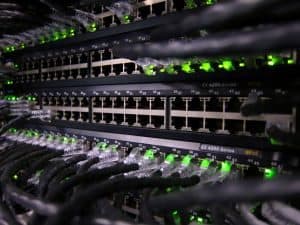
Research firm Gartner shares its advice to IT leaders embarking on an AIOps strategy.
As enterprises increasingly strive to digitize their business functions, AIOps, observability, automation and other new functionalities are becoming key elements in IT operations strategies.
A new report from research and advisory firm Gartner hammers home that message.
“As organizations continue to undertake digital transformation, they no longer have the luxury of responding to issues after they occur. Instead, they must become proactive and address potential issues before they impact user experience,” wrote Gartner’s team of experts.
Why AIOps
They added, “There is no future of IT operations that does not include AIOps. This is due to the rapid growth in data volumes and pace of change (exemplified by rate of application delivery and event-driven business models) that cannot wait on humans to derive insights.”
Gartner also highlighted how AIOps, observability, and automation can benefit the varied personas involved in DevOps functions, including DevOps, site reliability engineers (SRE), IT operations, cybersecurity, even senior business and IT leaders.
In this analysis of the AIOps market, Gartner delineated between “domain-centric” and “domain-agnostic” providers, noting that in a world of multi-vendor, open-source, and cloud initiatives domain-agnostic makes sense as the way to go. That choice becomes particularly important in a post-Covid business environment where goals are dominated by practical outcomes rather than aspirational goals, according to Gartner.
Explaining the difference, Gartner wrote, “The domain-agnostic platform is emerging as a stand-alone market, distinct from domain-centric AIOps platforms. This is due to flexibility in ingesting increasingly diverse datasets across a progressive roadmap stretching from three to five years. Use cases on such roadmaps focus beyond anomalies and are inclusive of behavior analysis, customer engagement and identifying underlying opportunities.”
In for the Long Haul
However, as enterprises turn to AIOps, observability and automated remediation they should understand that the payback from an AIOps initiative is in the longer term and be patient, several years, Gartner said.
Gartner helped to define the role of AIOps and what it offers an organization, emphasizing that AIOps isn’t just a data storage and retrieval system limited to trend analysis and forecasting.
“The goal of AIOps is to curate and enhance the quality of ingested data so [infrastructure and operations] leaders can drive multiple use cases relevant to the appropriate practice or persona. For example, pattern discovery can help forecast emerging behavior, relationships across IT entities, and benchmarking behavior (of IT artifacts, users and agents) to identify anomalies and provide relevant context to business owners. Analytics also facilitates automated insights, eases root cause determination and enables automated actions for resolving identified issues.”
Yet, IT leaders shouldn’t think that they are simply turning over the keys to their IT operations to a machine.
Rather, Gartner said the “likely candidates for automated actions from prescriptive tools” today are issues that are low-risk, likely to cause relatively little damage if they fail. So, humans play a role in manually pre-determining actions that the software can take, such as a recommended patch update or some workload optimization. Otherwise, the key benefits would be that the AIOps platform identifies potential issues that human operations can evaluate and take the appropriate recommended actions.
How to Succeed With AIOps
Gartner recommended that IT leaders:
- Prioritize practical outcomes over aspirational goals by adopting an incremental approach that starts with replacing rule-based event analytics and expands into domain-centric workflows like application and network diagnostics.
- Choose between domain-centric or domain-agnostic AIOps by allowing the use case to determine the approach. Use domain-centric AIOps features built into a monitoring tool for a one-off, specific use case, and deploy a domain-agnostic stand-alone solution with a roadmap straddling multiple use cases.
- Enable task automation, knowledge management and change analysis by selecting an AIOps platform that supports bidirectional integration with ITSM tools. Beware of tools that provide only basic search-and-display capability.
- Enable continuous insights across ITOM by supporting these three aspects of AIOps platforms: observe, engage and act.
For more information about the Gartner Market Guide for AIOps Platforms you can view it on the Moogsoft website.






